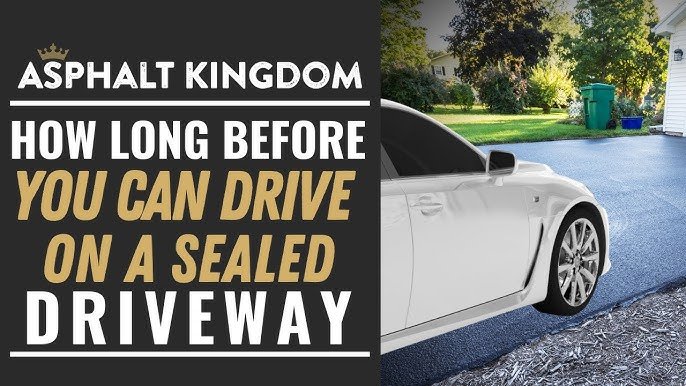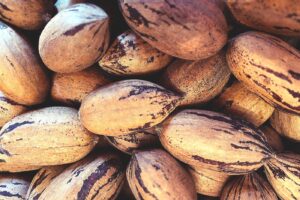
When Can You Drive On Sealed Driveway: The Right Wait Time
How long before driving on a sealed driveway? It’s a question that often arises after going through the process of sealing your driveway. The short answer is typically 24-48 hours, but there are variables to consider. Factors like weather conditions, type of sealant used, and application technique can impact the curing time. Understanding these factors can help ensure you get the best results and longevity out of your newly sealed driveway. Let’s delve into the details to make sure you’re driving on a smooth and durable surface in no time.
How Long Before Driving on a Sealed Driveway: Everything You Need to Know
Sealing your driveway is a great way to protect it from the elements and enhance its appearance. However, once your driveway has been sealed, it’s crucial to allow the proper amount of time for the sealant to cure before driving or parking on it. In this comprehensive guide, we will delve into the details of how long you should wait before driving on a sealed driveway, factors influencing curing time, and tips to ensure the longevity of your driveway.
Understanding the Curing Process
Before we discuss how long you should wait before driving on your newly sealed driveway, let’s take a moment to understand the curing process. When a driveway is sealed, the sealant needs time to bond with the surface and form a protective barrier. This process, known as curing, involves the evaporation of solvents in the sealant and the hardening of the remaining components.
Types of Sealants
There are different types of sealants available for driveways, including acrylic, asphalt-based, and coal tar sealants. Each type has its own curing time, which can range from a few hours to several days. It’s essential to follow the manufacturer’s recommendations for the specific sealant you have applied to your driveway.
Factors Influencing Curing Time
Several factors can influence how long it takes for the sealant on your driveway to cure properly. These factors include the type of sealant used, weather conditions, and the thickness of the application. Let’s explore these factors in more detail:
1. Type of Sealant
As mentioned earlier, different types of sealants have varying curing times. Acrylic sealants, for example, may dry within a few hours, while coal tar sealants can take up to 48 hours to cure completely. Be sure to check the product label or consult with the manufacturer to determine the specific curing time for your sealant.
2. Weather Conditions
The weather plays a significant role in how long it takes for the sealant to cure. Extreme temperatures, high humidity, or rain can all prolong the curing process. Ideally, you should seal your driveway during mild weather conditions to ensure proper curing without any interference from the elements.
3. Thickness of Application
The thickness of the sealant application can also impact curing time. A thicker layer of sealant will take longer to cure compared to a thin, even coat. It’s important to follow the manufacturer’s instructions regarding the recommended application thickness to facilitate faster curing.
How Long to Wait Before Driving on a Sealed Driveway
Now that we’ve covered the basics of the curing process and factors that influence curing time, let’s address the big question: how long should you wait before driving on your freshly sealed driveway? While the exact time can vary depending on the aforementioned factors, a general rule of thumb is to wait at least 24 to 48 hours before driving or parking on a newly sealed driveway.
During this initial curing period, it’s essential to keep all vehicles off the driveway to prevent any damage to the sealant. Walking on the driveway should also be avoided, if possible, to allow the sealant to cure undisturbed. Remember, patience is key when it comes to ensuring the longevity and effectiveness of your driveway sealant.
Tips for Maintaining Your Sealed Driveway
Once your driveway has fully cured, there are several measures you can take to maintain the longevity of the sealant and keep your driveway looking its best:
1. Regular Cleaning
Regularly sweep or use a leaf blower to remove debris and dirt from your driveway. Avoid using harsh chemicals or cleaners that can damage the sealant. For tougher stains, opt for gentle cleaning solutions recommended by the sealant manufacturer.
2. Avoid Sharp Objects
Avoid dragging sharp objects or heavy equipment across your driveway, as these can scratch or chip the sealant. If you need to perform any maintenance work, use protective measures to prevent damage to the sealed surface.
3. Reapply Sealant as Needed
Over time, the sealant on your driveway will wear down due to exposure to the elements and vehicle traffic. Keep an eye out for signs of wear, such as fading or cracking, and reapply sealant as needed to maintain the protective barrier.
Driving on a sealed driveway too soon can compromise the effectiveness of the sealant and shorten its lifespan. By allowing an adequate amount of time for the sealant to cure properly and following recommended maintenance practices, you can enjoy a durable and visually appealing driveway for years to come. Remember, patience and proper care are key to maximizing the benefits of driveway sealing.
Now that you’re equipped with the knowledge of how long to wait before driving on a sealed driveway and how to maintain it, go ahead and give your driveway the protection it deserves!
HOW LONG BEFORE YOU CAN DRIVE ON A NEWLY SEALED DRIVEWAY
Frequently Asked Questions
How long should I wait before driving on a newly sealed driveway?
It is generally recommended to wait at least 24 to 48 hours before driving on a freshly sealed driveway. This allows the sealant to cure and dry properly, ensuring a strong and durable finish.
Is it necessary to avoid parking on a sealed driveway during the initial drying period?
Absolutely, it is crucial to refrain from parking on a newly sealed driveway for at least 24 to 48 hours. This prevents any damage or imprints on the surface and contributes to a successful sealant application.
Can weather conditions affect the waiting time before driving on a sealed driveway?
Yes, weather conditions play a significant role in the curing process of a sealed driveway. If it is hot and sunny, the sealant may dry faster, but it is still advisable to wait the recommended time frame to ensure optimal results.
What should I do if I need to access my driveway urgently after it has been sealed?
If urgent access is required, it is best to consult with the professionals who sealed your driveway. They can provide guidance on potential solutions or temporary measures to allow safe passage without compromising the integrity of the sealant.
Final Thoughts
After sealing your driveway, wait at least 24-48 hours before driving on it to allow the sealant to cure properly. This time frame is crucial to ensure your driveway remains durable and looks great for years to come. Rushing this process can lead to premature wear and damage to the sealant. Plan ahead and give your sealed driveway the time it needs to fully set before using it.


